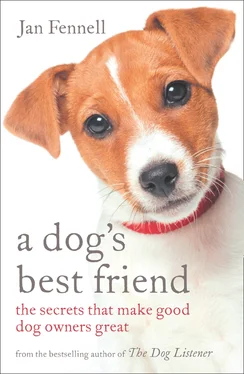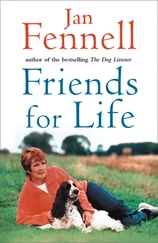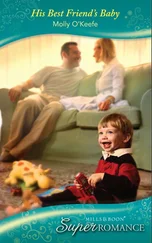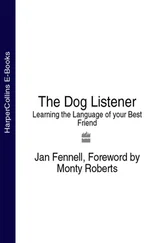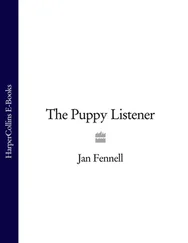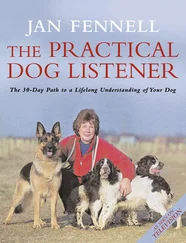Albie didn’t take too kindly to this.
‘Is that right?’ he said. ‘So how do you expect good manners if you don’t show good manners?’
The other man looked nonplussed.
‘What are you on about?’ he said.
Albie indicated to me. ‘If I wanted young Janice here to do something, what do you think would be the best way to get her to do it? Ask her nicely or show her the back of my hand?’
The other man simply shook his head, as if to say Albie was soft in the head. They soon disappeared into the pub, where – presumably – the argument carried on.
On the surface this may seem a small moment, nothing much to write home about. But to me, at the age of five or six, it struck a powerful chord.
The London of those days was a difficult place to make a living. We were still getting over the effects of the Second World War – my mother and father had found it particularly hard to readjust to life after their wartime experiences. And life was generally hard at that time, so the notion that dogs were deserving of anyone’s time and effort was highly unusual. ‘It’s just a dog,’ was a commonplace expression. Yet here was someone defending a dog as if it were a person. It was something I had never heard before, but I soon discovered it wasn’t a unique view.

Another influential person in my childhood was my cousin Doreen. While I was younger, Doreen lived near us in West London with her family, but when I was ten or so, she moved to Welwyn Garden City, the utopian new community in Hertfordshire. We regularly visited them there, on Sundays, Bank Holidays and Christmas.
The move to the greener climes of Hertfordshire had an immediate impact on the family’s lifestyle. It wasn’t long before I discovered they had acquired a dog – a lovely, black and tan crossbreed puppy they named Tinker. Tinker belonged to the whole family, but early on it was clear that Doreen regarded him very much as her dog. Most of the time it was she who fed him and walked him. And she spent the most time playing with him.
He was not the first dog in the family – that was Bruce, a lovely white German shepherd one of my uncles had got from Battersea Dogs Home. The mistreatment he suffered still haunts me to this day. I will never forget the way my uncle would tease him by placing a bar of chocolate high on a table, leaving Bruce to salivate as he looked at it. From the outset, however, it was clear that Doreen had a very different attitude to dogs.
Their house was always full of people. The first time I went there my cousin Paul was playing with a friend. I remember they were in the garden throwing a ball around. As part of their entertainment they put the ball in front of Tinker’s face, then pulled it away again as he snapped to grab it. Paul had only done this a couple of times when Doreen appeared in the kitchen doorway. By coincidence, she happened to have a rolling pin in her hand. It made the sight of her all the more intimidating.
‘You can stop that right away, young man. I won’t have that,’ she said. ‘How would you like it if someone did that to you?’
The boy looked stunned, as I must have done. I had never heard anyone in the family defend a dog in that way before. But it wasn’t long before I heard it again.
A little later that same day, Doreen’s husband, Reg, appeared in the garden with a biscuit. Reg was fond of Tinker and would take him for walks, and the dog soon appeared at his side. ‘What’s the matter? Want a bit of this do you?’ he said playfully waving the biscuit around.
Doreen soon reappeared – this time without the rolling pin. He may have been the ‘man of the house’, but the same rules applied.
‘Reg, I won’t have you teasing him like that. It might be fun for you, but it’s not fun for the dog. How’d you like it?’
We all laughed, but I looked at Doreen’s face and saw she was utterly serious. From then on, I became fascinated by her relationship with her dog.
Doreen was a wonderful person and I always looked forward to seeing her, but the fact she had such a lovely dog made each visit even more special. Doreen was very strict about what we could and couldn’t do with her dog. Playing the retrieval games which Tinker enjoyed was fine. Taking him out for a walk without an adult, on the other hand, was not. ‘You’re not responsible enough to take a dog out,’ she said, which again was something new and radical for me. Back in the streets of West London, children routinely walked dogs.
Doreen was absolutely consistent in her approach, no matter who was involved. On one occasion, I remember my father and his brother, Doreen’s father, Fred, playing ‘piggy in the middle’ with a ball and Tinker as the increasingly agitated ‘piggy’. Doreen was upstairs, but the moment Tinker let out a distressed bark, she was bounding down the stairs.
‘What do you think you’re doing?’ she asked them – it didn’t matter that it was her father and uncle involved, two of the senior figures in the family.
My Dad put an arm around her and asked her to lighten up a little.
‘Come on, Doreen, you think more of that dog than you do of us,’ he said.
But she was adamant. ‘He’s my dog and I’m going to treat him my way and I’m not having it, Uncle Wal.’ And that was that.
On another occasion, her daughter Diane was trying to put a doll’s bonnet on Tinker. Again there was no argument.
‘Stop that, you have dolls for that,’ Doreen insisted. ‘The dog is not there for your entertainment.’
Looking back, I can see that Doreen’s approach worked. As Tinker grew up, I couldn’t help noticing how much calmer he was than all the other dogs I’d come across. There was no rushing around, no barking and jumping up. I remember asking her one day, ‘How come Tinker’s so happy, Doreen?’
‘Because I haven’t made him mixed up like so many other people do,’ she said. ‘Other people’s dogs are so anxious all the time. No wonder, given the way people tease them and treat them badly. All I do is give some consideration to how he’s feeling.’
It was an attitude that was an extension of Doreen herself. She was the warmest, kindest person in my family. She was also someone who committed herself one hundred per cent to anything she did. To everybody else, ‘a dog was just a dog’. But to Doreen it was a living creature, with feelings, with a soul.
As Tinker’s training developed, so too did Doreen’s ideas. She used food rewards in a way I’d never seen anyone do before. For instance: ‘Tinker’s not going to do the right thing for nothing,’ she’d say. ‘He’s not stupid.’
My Uncle Fred would often see this and tell her she was spoiling him and turning him into a softie. ‘The dog should do it because you say so,’ he’d say.
She’d shoot him a look and reply: ‘You wouldn’t.’
As a young girl, sitting there on the fringes of all this, I remember thinking what common sense it sounded. But it was a long time before I understood what Albie and Doreen had instinctively sensed: that a dog was going to respond better if it was shown some respect and consideration, that you were going to have a better relationship by empathising with it, by trying to understand how it might feel to be in its position. It was a lesson worth waiting to learn.
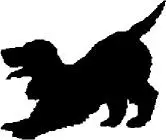
THE TIES THAT BIND
Why great owners understand man’s special relationship with dogs
Like everything else nowadays, people have a tendency to overcomplicate their relationship with their dogs. Too often, I think, we forget that ours is a simple partnership that dates back tens of thousands of years, to the time when our ancestors first domesticated the wolf, Canis lupus , to create the dog, Canis familiaris . Back then, man and dog were bound by a deep and instinctive understanding of each other’s needs and nature. Man provided security, sanctuary, food and warmth; the dog provided its superior senses and hunting abilities. They shared a form of language and understood each other perfectly. They were a team, working intuitively together – and very successfully.
Читать дальше
